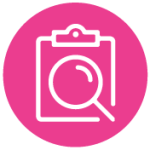
| Module 1 | Introduction |
Unit 1
| ||||
|---|---|---|---|---|---|---|
| Module 2 | Getting Started |
Unit 1
| ||||
| Module 3 | Audiences/Roles |
Unit 1
|
Unit 2
|
Unit 3
|
Unit 4
|
Unit 5
|
| Module 4 | People & Processes |
Unit 1
|
Unit 2
|
Unit 3
|
Unit 4
| |
| Module 5 | Standards |
Unit 1
|
Unit 2
| |||
| Module 6 | Tools |
Unit 1
|
Unit 2
|
Unit 3
|
Unit 4
|
Unit 5
|
| Module 7 | Implementations |
Unit 1
| ||||
| Module 8 | Resources |
Unit 1
|
Unit 2
| |||
| Module 9 | Appendices |
Unit 1
|
 Who should use the CODI Prevalence Queries?
Who should use the CODI Prevalence Queries?
Researchers typically use the CODI prevalence queries (CODI-PQs) and should review the CODI-PQs implementation guidance links below for detailed information.
What are CODI-PQs?
CODI-PQs provide a suite of tools to calculate population obesity prevalence estimates for youth and teens, adults, and households from electronic health record (EHR) data. Statistical weighting is used to reduce non-probability sample bias and produce representative distributions of the populations of interest. Imputation is used to infer missing race/ethnicity and enable estimation across subpopulations.
CODI-PQs use the National Center for Health Statistics (NCHS) Data Presentation Standards for Proportions9 to suppress estimates based on small sample sizes.
Why use CODI-PQs?
CODI-PQs should be used to generate a population estimate of one of the three categories based on a sample of EHR data for a specific geography (e.g., state, state and county, state and ZIP Code Tabulation Areas [ZCTA-3]) and/or subpopulation (e.g., age group, sex, race).
How to use CODI-PQs
Visit the following links for details on how to use CODI prevalence queries.
Implementation guidance
Github links


